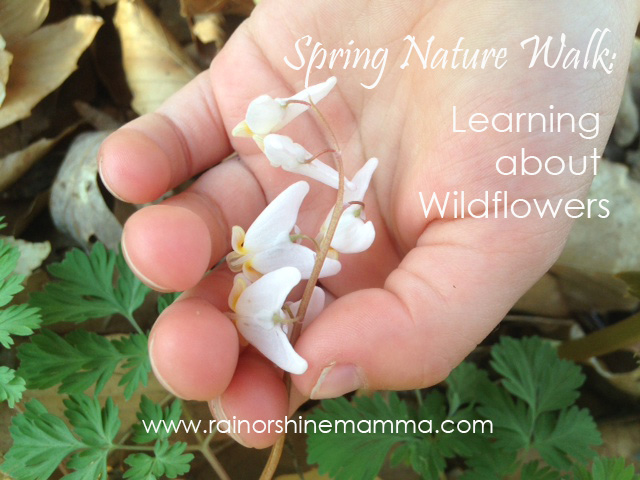
Spring is a wonderful time of the year to go outside to explore all the changes that are taking place and watch everything come to life after the winter. I’m once again teaming up with a few of my fellow “Woodsy Mamas” to give you some great ideas for things to do and look out for while you’re taking the kids on a nature walk!
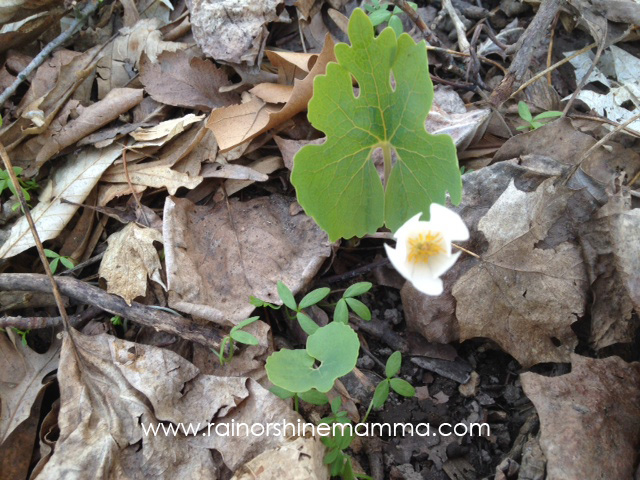
If you’re a regular reader of my blog, you already may know that I’m a big fan of play-based, child-led learning. That means that our nature walks are rarely planned in advance and usually revolve around whatever captures my girls’ interest at the time. And I’ve found that nature is never short on teachable moments. Recently, we did a spontaneous Spring Nature Study involving a dead deer, which turned out to be a great learning tool and conversation starter.
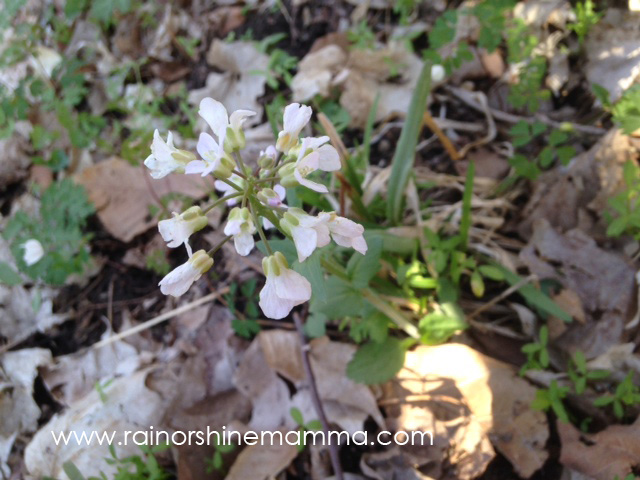
Last weekend, we set out to the woods and the girls immediately noticed that an abundance of wildflowers had started to bloom, covering the whole forest floor with tiny white spots. Previous years, I’ve just walked through them without paying much attention, but since one of my goals for 2014 was for us to learn to identify at least three wildflowers, I figured this could be a good time to do it. Equipped with my smartphone camera we started documenting the flowers and were surprised to find not one or two but six different types of wildflowers – all white.
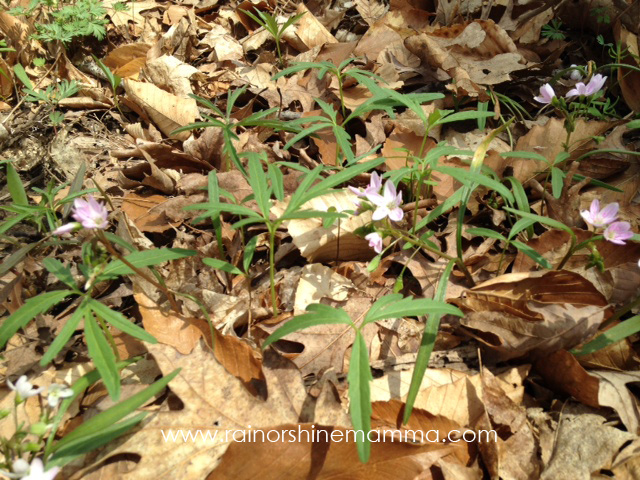
After we got back we started searching the web for wildflower identification guides and were immediately able to identify four out of the six flowers using the searchable database on MyWildflowers.com. That left two unidentified, but I got some leads from Flower Finder for Indiana Wildflowers and Wildflowers of the United States, which lists the various native plant societies in each state. And thanks to my readers I was able to name the last two as well!
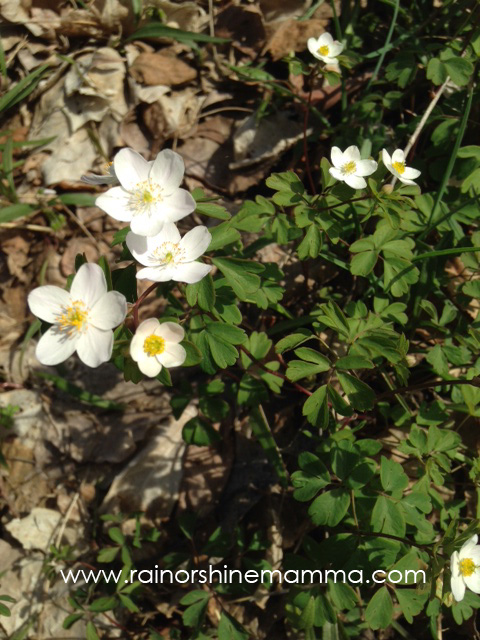
If you’re interested in learning more about native plants and wildflowers, doing online searches is a good place to start, but the best tool will probably still be a real field guide for your state or country, since many flowers online are misidentified. I’m planning to invest in one shortly, as it will make it much easier for the girls to participate in the “detective work” of trying to figure out what the flowers are called. In the meantime, we’ll try to memorize the names of the flowers we’ve found so far. We’ll do this for two reasons: partly because A) I think it’s neat to know the real name of a flower rather than constantly referring to it as “that little white flower” and B) because I think that the more our children know about nature and wildlife, the more likely they will be to want to protect it.
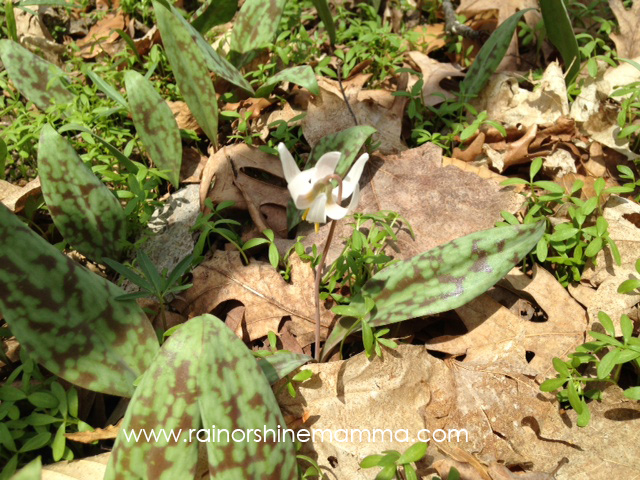
For more spring nature walk ideas, make sure to check out these posts as well:
Mommy Loves Trees: Learning about spring trees
How Wee Learn: Connecting with Nature with a Spring Nature Walk

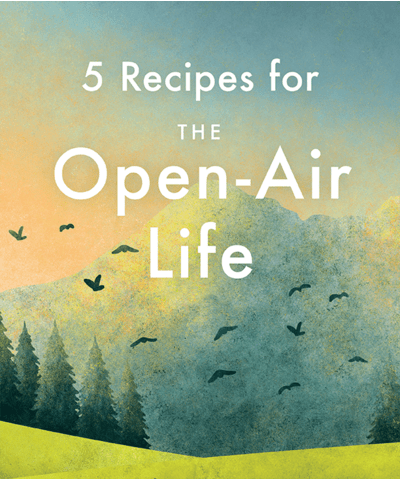
What a lovely post. I have recently completed some training and I want to gain more knowledge of woodlands and what you find in them. I think it makes it so much more interesting for children when you can give them facts and clever information. Nature detectives is a great source of woodlands information, great fact sheets etc.
Thank you! And yes, Nature Detectives is a great site, I’ve found useful information there several times and love their printables!
How wonderful to get out with your kids and explore what it around you. Trying to learn a few plants at a time is a great way to go about it. I saw your questioning caption on whether the one flower is a Maypop but it looks like it is a Bloodroot. It is a beautiful early crisp white flower, one of my favorites 🙂 Here is a good picture of the flower and leaf together – http://allofnature.blogspot.com/2013/06/beautiful-bloodroot-berries.html Good luck to you and enjoy your walks!
I think you’re right – that does look like a Bloodroot now that I see the other picture. Thank you for solving that mystery! I’m going to edit that caption right now:o)
My son is obsessed with wildflowers. I need to start learning and teaching him their names. Thanks for the inspirations.
Mae, there are so many different kinds just in our backyard it’s unbelievable. Since I grew up in Sweden, I’m starting from scratch, since most of the flowers I grew up around don’t grow here. Thanks for stopping by!
I am visiting from Mae’s blog and I love your quote. I love to see kids outside here on the pond and have tried to show them nature. But there are so many video games… I worry about the future but will try with the kids around here as a retired teacher to show them the wonder in their own yards… Michelle
Thanks for reading, Michelle. It’s true that there’s a lot of competition for kids’ time coming from video games and other electronics these days and I think it’s really important for parents to set limits on screen time. I love that you’re trying to get out with the kids in your neighborhood – every positive change has to start with ourselves!
A really lovely post and beautiful photos. I think we’ll have to go hunting for flowers, we went on an insect hunt last week. #letkidsbekids
Thank you, Ciara! Insects are great fun, too:o)
I love spring woodland flowers! Yes, I think that is blood root. The other one might be cut-leaf-toothwort (your picture doesn’t show the leaves so it is hard to tell).
Brigette – Thank you so much for suggesting cutleaf toothwort. After I looked up some more pictures I realized I had mixed up cutleaf toothwort with spring beauty, since the flowers are really similar. The leaves are what sets them apart, since the cutleaf toothwart has a serrated edge. Identifying wildflowers was a lot harder than I initially thought!
Great idea to investigate and identify some wild flowers from a lovely forest walk. Fantastic way to teach children about nature and enjoy some outdoor fun.
Thanks for linking #LetKidsBeKids
Thanks for reading, Karen! Love #LetKidsBeKids!
Another great post 🙂 I’ve actually just bought myself a wildlflower id book so we will be doing lots of looking at flowers this year. Thanks so much for sharing at the Outdoor Play Party 🙂
Thanks for reading, Leila! I’m glad you got yourself a wildflower book – I think learning the names of a few wildflowers adds a new dimension to nature walks. I learned all the basic ones when I was little in Sweden, but after I moved to the US I’m having to re-learn, since these flowers are unfamiliar to me!